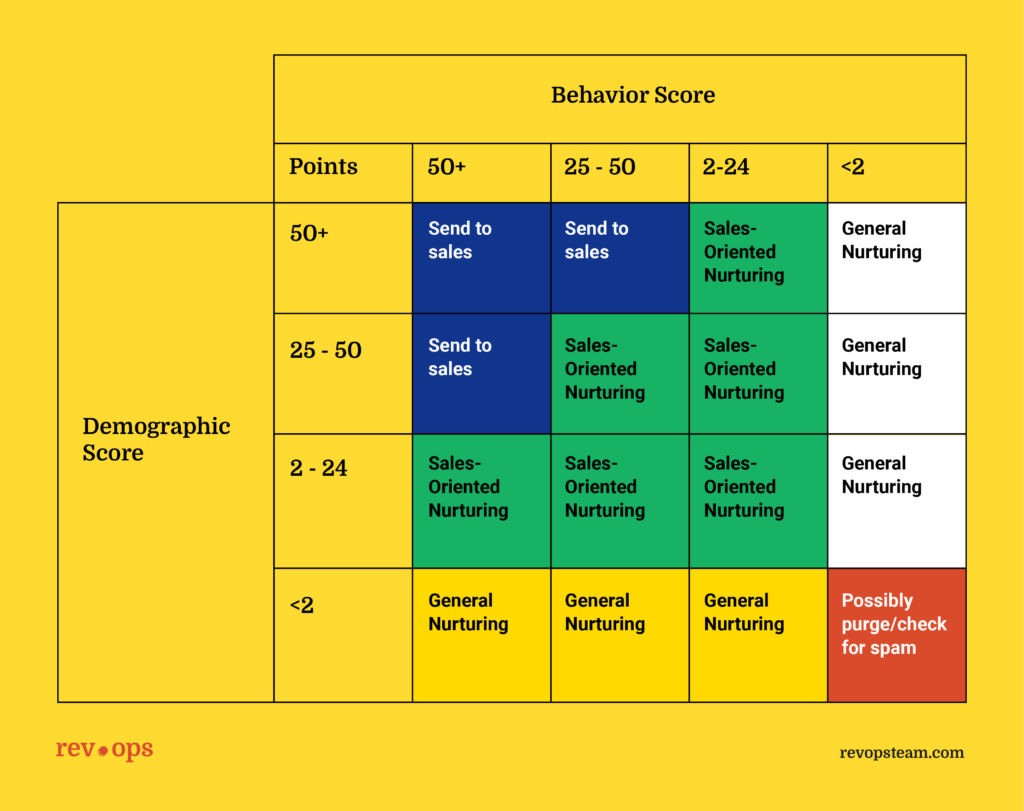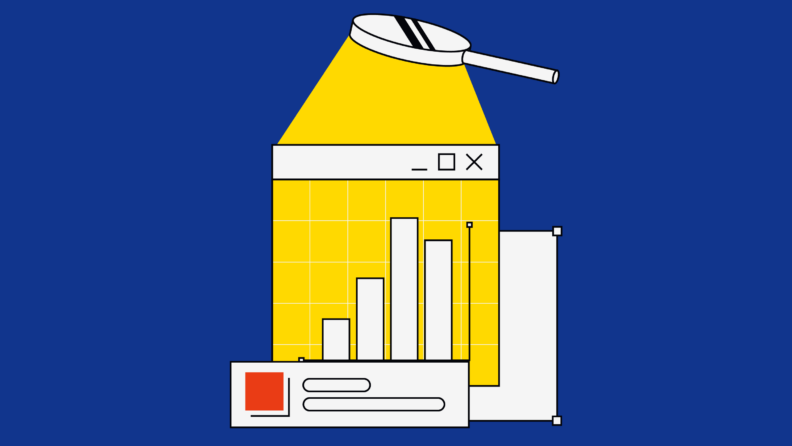Lead Scoring: Your New Best Friend: Lead scoring is essential for SaaS startups, helping to prioritize leads effectively, saving time, and maximizing the chances of hitting revenue targets.
Models Galore: Choose Wisely: Different lead scoring models exist, from predictive to hybrid, allowing startups to select the best approach based on their data and customer journey.
Collaboration is Key: Sales and marketing must work together to define high-value leads, ensuring alignment and a more effective lead scoring model.
Iterate to Elevate: A successful lead scoring model requires constant refinement based on performance metrics and feedback, making it adaptable to changing customer behaviors.
Automate for Success: Leveraging CRM tools to automate lead scoring can enhance efficiency and allow teams to focus on nurturing leads that are more likely to convert.
Want to boost your lead-to-opportunity conversion rates this year? You’re in the right place. Lead scoring isn't just a buzzword; it's the real deal for scaling SaaS companies that need to prioritize leads quickly and efficiently.
Lead scoring models can save you a ton of time and resources by helping you figure out who’s worth your sales team’s time—and who isn’t. In a resource-strapped startup, that distinction can be the difference between hitting your revenue targets or wasting months chasing unqualified leads.
Ready to level up your lead management game? Let’s break down how to build the best lead-scoring model for your business, without getting bogged down by jargon or complexity.
What is a Lead Scoring Model?
At its core, a lead scoring model is your way of grading inbound leads based on how likely they are to convert into paying customers.
It’s simple: every time a lead acts (like visiting your pricing page or downloading a whitepaper), you assign them a certain number of points. Likewise, if they fall short on key attributes (wrong job title, company size, etc.), they lose points.

For a SaaS startup trying to scale, this isn’t just a helpful tool—it’s crucial. Why? Because without a scoring model, your team is probably wasting time on leads that are nowhere near ready to buy, while the real gems slip through the cracks.
Types of Lead Scoring Models
Not all lead scoring models are created equal. Depending on your startup’s data, resources, and sales funnel stages, you might need to choose between a few different models. Here’s a breakdown of the main types you’ll want to consider:
| Lead Scoring Model | Pros | Cons | Best For |
| Predictive Lead Scoring Model | Data-driven: The algorithm analyzes data, eliminating guesswork. | Complex setup: Requires significant time and effort to implement. | Startups with large historical datasets and complex engagement patterns. |
| Implicit Lead Scoring Model | Real-time data: Tracks and scores lead actions as they happen. | Requires a clear customer journey: Can be tricky without defined behavior patterns. | Startups with a well-defined customer journey and many touchpoints. |
| Explicit Lead Scoring Model | Simple setup: Easy to implement using already collected data. | No behavioral indicators: Misses engagement or intent data. | Startups with a clear ICP but less focus on behavior tracking. |
| Hybrid Lead Scoring Model | Best of both worlds: Combines demographic data with behavioral insights. | Moderate complexity: Balancing both data types requires careful calibration. | SaaS companies with both demographic and behavioral data looking for a comprehensive model. |
Predictive Lead Scoring Model
This is where machine learning comes in. Predictive lead scoring models analyze past leads and customer data to forecast which leads are most likely to convert. Think of it as lead scoring on autopilot—once it’s set up, it adjusts itself based on patterns it finds in your data.
Best for: Startups with a significant amount of historical data and diverse customer engagement metrics. The more data you have, the better this model performs.
Pros: Data-driven: Let the algorithm crunch the numbers, so your team doesn’t have to rely on gut feelings.
Cons: Complex setup: Be prepared to spend time setting this up. The payoff is huge, but it requires strong initial effort.
Implicit Lead Scoring Model
This model focuses on how leads engage with your brand in real-time. Are they reading your blog posts? Visiting your pricing page? Requesting a demo? These behaviors give you insight into their buying intent.
Best for: Startups with a clear customer journey map and multiple touchpoints across the buyer’s journey.
Pros: Real-time data: No more waiting for leads to fill out forms. You can track and score lead actions as they interact with your website or product.
Cons: Requires well-defined customer journey: If you’re unsure what behaviors indicate buying intent, this model can be tricky to implement.
Explicit Lead Scoring Model
This is your most basic form of lead scoring, and it’s all about the data the lead gives you directly—things like job title, company size, industry, or geographic location. It’s simple and effective but limited in scope because it doesn’t consider engagement or behavior.
Best for: Startups that have a clear ICP but aren’t ready to implement more complex behavioral or predictive scoring.
Pros: Simple setup: This is the easiest model to implement. All you need is the data you’re already collecting from forms or lead enrichment tools.
Cons: No behavioral indicators: Just because someone fits your ICP doesn’t mean they’re ready to buy.
Hybrid Lead Scoring Model
Why choose between implicit and explicit scoring when you can combine the two? A hybrid lead scoring model takes the best of both worlds, scoring leads based on demographic/firmographic data and their behavioral engagement.
Best for: SaaS companies looking for a more nuanced way to prioritize leads, especially if they have a good mix of both demographic and behavioral data.

Characteristics of a Good Lead Scoring Model
Not all lead scoring models are equally effective. To ensure yours is working, it should tick a few important boxes:
1. Aligns with Business Objectives
A good model reflects your specific business goals. Whether you’re optimizing for revenue, churn reduction, or upsell potential, the attributes you score should be directly tied to your company’s success metrics.
2. Iterates Constantly
Your lead scoring model isn’t a set-it-and-forget-it tool. You need to review and refine it regularly based on feedback from your sales team and real-world performance. Customer behaviors shift, and so should your scoring criteria.
3. Cross-Functional Collaboration
Sales and marketing need to be aligned on what makes a high-value lead. If marketing thinks one thing and sales another, your model is doomed from the start. Make sure both teams are involved in setting up your lead scoring system.
How to Build Your Own Lead Scoring Model
Ready to get started? Here’s a simple 3-step process to implement your lead scoring model:
Step 1: Analyze Customer Data
First, look at your historical customer data. What do your best customers have in common? Focus on key attributes like job title, company size, and the pages they visited before converting.
Step 2: Analyze Non-Customer Lead Data
Next, take a look at the leads who didn’t convert. This will help you identify attributes of bad leads so you can assign negative points to them in your model. Maybe they were in the wrong industry or only visited low-intent pages.
Step 3: Assign Points and Start Testing
Finally, assign points to each attribute and start using your model. Positive actions like demo requests or high-value page visits should be worth more points, while low-value actions like subscribing to a newsletter might get fewer.
Best Practices for Optimizing Your Lead Scoring Model
Once your model is in place, here’s how to make sure it stays effective:
1. Automate Your Scoring Process
Using a CRM tool like HubSpot or Salesforce to automate lead scoring will save you hours. These platforms can adjust scores in real time as leads engage with your brand.
2. Regularly Review Performance
Don’t set your lead scoring model and forget about it. Schedule regular reviews to assess performance, look at conversion rates, and refine your point system based on actual sales outcomes.
Top Lead Scoring Software
These are some of the best software for lead scoring, lead management, and customer data on the market.
Prioritizing Leads Just Got Easier
A well-built lead scoring model helps SaaS companies focus on the leads most likely to convert, streamlining marketing and sales efforts. Whether you go for a predictive model powered by AI or a simple explicit model based on firmographics, the key is to start small, track your results, and iterate often.
By prioritizing high-quality leads and focusing your resources where they matter most, your team can boost efficiency and hit those revenue goals faster.


